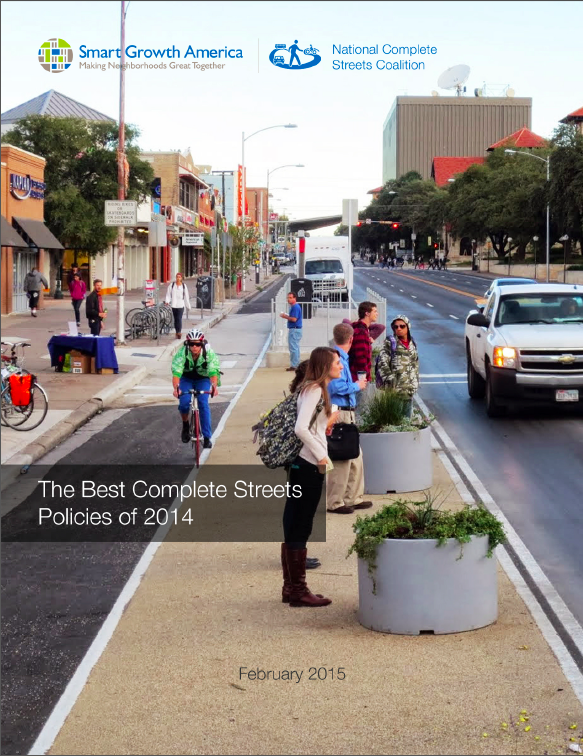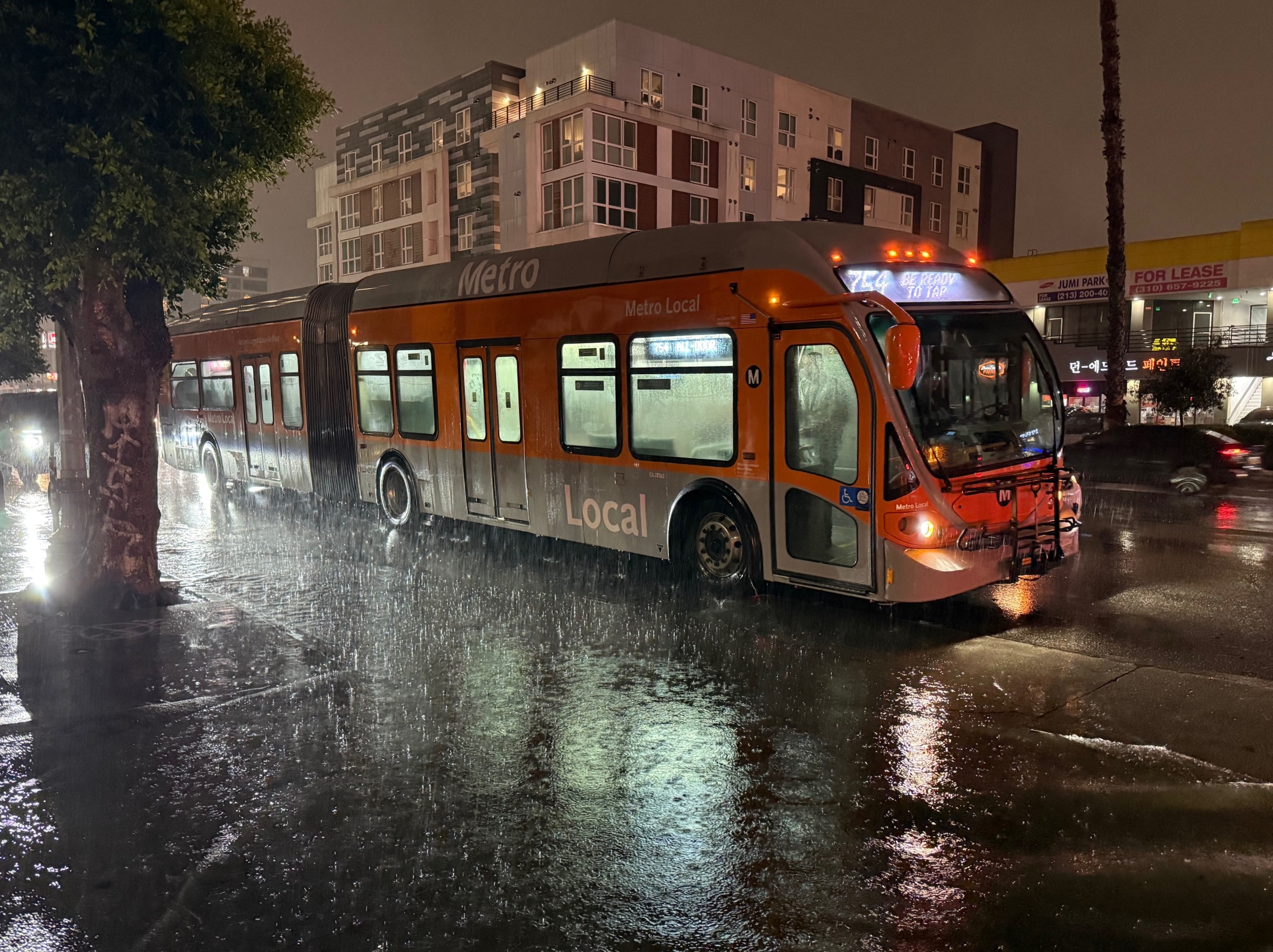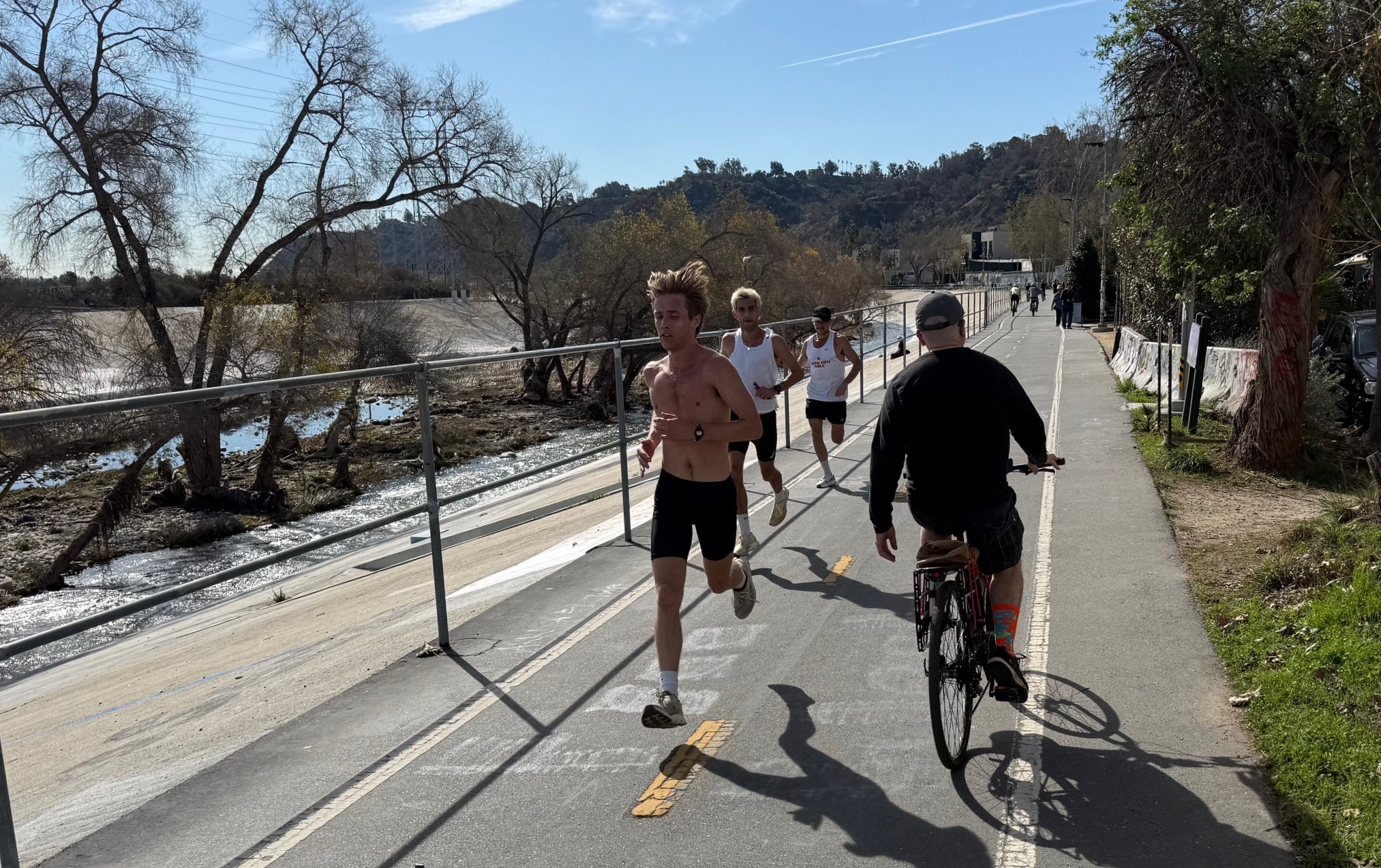
Smart Growth America just released its report ranking The Best Complete Streets Policies of 2014. Streetsblog USA reviewed the report here.
Of 70 new Complete Streets policies adopted in 2014, only two were in California: L.A. Metro and San Diego Association of Governments (SANDAG.) Metro's policy received the honor of being tied for the #10 spot with a score of 86.4 out of 100, the highest of any metro region in California.
Complete Street Policies only examines new policies adopted in 2014. Since A.B. 1358 was approved in 2008, California has mandated that all municipalities incorporate Complete Streets policies along with updates to the transportation portions of general plans. Many California cities had already complied with A.B. 1358's deadline of January 2014.
So, even though L.A. is scoring in the top ten, it doesn't mean that other California cities don't have similar or better policies.
The National Complete Streets Coalition scored newly adopted Complete Streets policies on how clearly they articulate defined aspects of complete streets. For example, policies are judged on how direct or indirect their vision and intent is, whether they articulate the inclusion of all users and modes, whether the policies apply to new construction only or to all projects, and whether they clearly articulate any exceptions, among other aspects. A full scoring criteria list can be found on page 19 of the document [PDF].
The L.A. County Metropolitan Transportation Authority (Metro) was highlighted for its model policy language around one of the scoring criteria: jurisdiction. Metro clearly articulates that all relevant departments and partner agencies...
...will work towards making Complete Streets practices a routine part of everyday operations; approach every relevant project, program, and practice as an opportunity to improve streets and the transportation network for all categories of users; and work in coordination with other departments, agencies, and jurisdictions to maximize opportunities for Complete Streets, connectivity, and cooperation.
Though the national report ranked Metro's Complete Streets policy highly, SBLA recently critiqued Metro's policy for its vague exceptions and non-binding language. Metro's policy is expected to be strengthened soon when staff add metrics to track Metro Complete Streets accomplishments.
How are complete streets policies working in your city or county? Has California's Complete Streets mandate made your streets safer and more complete?
One California city's success story making the rounds is San Luis Obispo. It goes beyond just adopting a Complete Streets policy, though. San Luis Obispo adopted modal share targets and tied funding to them. For example, the city's goal is to have bicycling account for 20 percent of all trips, and so the city spends 20 percent of its transportation funding on bicycle facilities. Read the full SLO success story at the Alliance for Biking and Walking.






